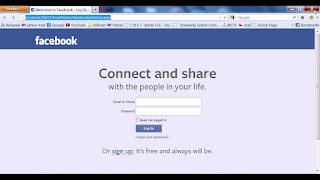Anti-phishing software consists of computer programs that attempt to identify phishing content contained in websites, e-mail, or other forms used to accessing data (usually from the internet) and block the content, usually with a warning to the user (and often an option to view the content regardless). It is often integrated with web browsers and email clients as a toolbar that displays the real domain name for the website the viewer is visiting, in an attempt to prevent fraudulent websites from masquerading as other legitimate websites.
Most popular web browsers comes with built-in anti-phishing and anti-malware protection services, but almost none of the alternate web browsers have such protections.
Password managers can also be used to help defend against phishing, as can some mutual authentication techniques.
Video Anti-phishing software
Client-based anti-phishing programs
- Apozy Anti-Phishing & Anti-Malware - browser extension
- avast!
- Avira Premium Security Suite
- CryptoPhoto mutual authentication
- Cyscon Security Shield - browser extension for Firefox
- Earthlink ScamBlocker (discontinued)
- eBay Toolbar
- ESET Smart Security
- GeoTrust TrustWatch
- Google Safe Browsing (used in Mozilla Firefox, Google Chrome, Opera, Safari, and Vivaldi)
- SmartScreen Filter (used in Microsoft Edge and Internet Explorer)
- Kaspersky Internet Security
- McAfee SiteAdvisor
- Mozilla Thunderbird - e-mail client which warns users of e-mails which may be part of an e-mail scam.
- Netcraft Toolbar
- Net Protector-web security)
- Netscape
- Norton 360
- Norton Internet Security
- PhishDetector - extension for Google Chrome
- PhishTank SiteChecker
- PineApp Mail-SeCure
- Quick Heal
- Windows Mail - default Windows Vista e-mail client
- Web Of Trust - browser extension
Maps Anti-phishing software
Service-based anti-phishing
- Area 1 Security
- Google Safe Browsing
- Mimecast Targeted Threat Protection
- OpenDNS
- PhishTank
- Webroot Real-time Anti-Phishing API
- Anti-Phishing Working Group
Anti-phishing effectiveness
A study conducted by 3Sharp (a company that helps businesses manage demo content) and released on September 27, 2006 tested the ability of eight anti-phishing solutions to block known phishing sites, warn about phishing sites, and allow legitimate sites. The study, commissioned by Microsoft and titled "Gone Phishing: Evaluating Anti-Phishing Tools for Windows", concluded that Internet Explorer and Netcraft Toolbar were the most effective anti-phishing tools.
A later independent study conducted by Carnegie Mellon University CyLab titled "Phinding Phish: An Evaluation of Anti-Phishing Toolbars" and released November 13, 2006 tested the ability of ten anti-phishing solutions to block or warn about known phishing sites and not block or warn about legitimate sites (not exhibit false-positives), as well as the usability of each solution. Of the solutions tested, Netcraft Toolbar, EarthLink ScamBlocker and SpoofGuard were able to correctly identify over 75% of the sites tested, with Netcraft Toolbar receiving the highest score without incorrectly identifying legitimate sites as phishing. Severe problems were however discovered using SpoofGuard, and it incorrectly identified 38% of the tested legitimate sites as phishing, leading to the conclusion that "such inaccuracies might nullify the benefits SpoofGuard offers in identifying phishing sites." Google Safe Browsing (which has since been built into Firefox) and Internet Explorer both performed well, but when testing ability to detect fresh phishes Netcraft Toolbar scored as high as 96%, while Google Safe Browsing scored as low as 0%, possibly due to technical problems with Google Safe Browsing. The testing was performed using phishing data obtained from Anti-Phishing Working Group, PhishTank, and an unnamed email filtering vendor.
The latest study, conducted by SmartWare for Mozilla and released November 14, 2006, concluded that the anti-phishing filter in Firefox was more effective than Internet Explorer by over 10%. The results of this study have been questioned by critics, noting that the testing data was sourced exclusively from PhishTank, which itself is an anti-phishing provider. The study only compared Internet Explorer and Firefox, leaving out (among others) Netcraft Toolbar and the Opera browser, both of which use data from PhishTank in their anti-phishing solutions. This has led to speculations that, with the limited testing data, both Opera and Netcraft Toolbar would have gotten a perfect score had they been part of the study.
While the two directly aforementioned reports were released only one day apart, Asa Dotzler, Director of Community Development at Mozilla, has responded to the criticism of the Mozilla-commissioned report by saying, "so you're agreeing that the most recent legitimate data puts Firefox ahead. Good enough for me."
Since these studies were conducted, both Microsoft and Opera Software have started licensing Netcraft's anti-phishing data, bringing the effectiveness of their browser's built-in anti-phishing on par with Netcraft Toolbar and beyond.
See also
- Mutual authentication
- Two-factor authentication - note: almost all two-factor techniques are also susceptible to phishing.
References
External links
- Anti-phishing software at Curlie (based on DMOZ)
Source of the article : Wikipedia

